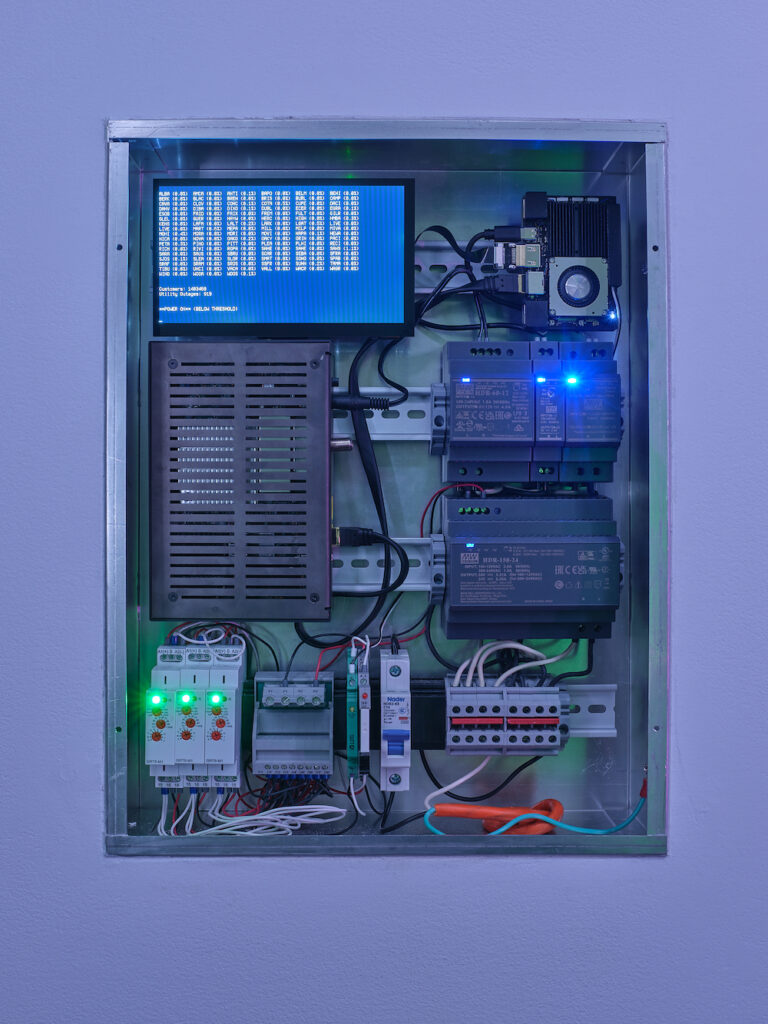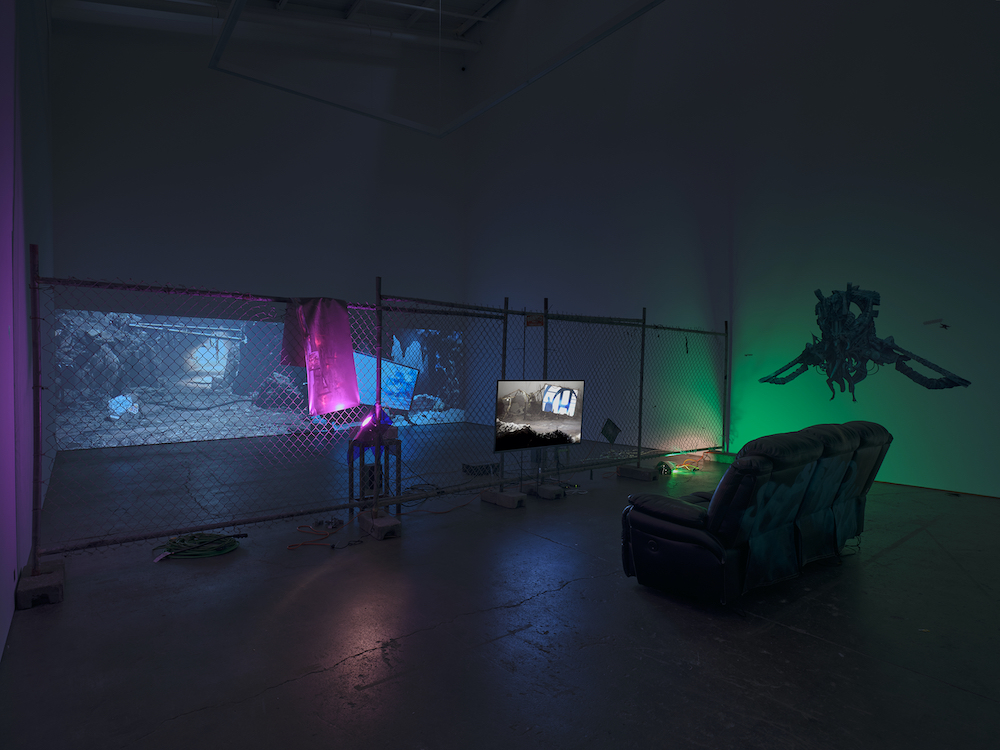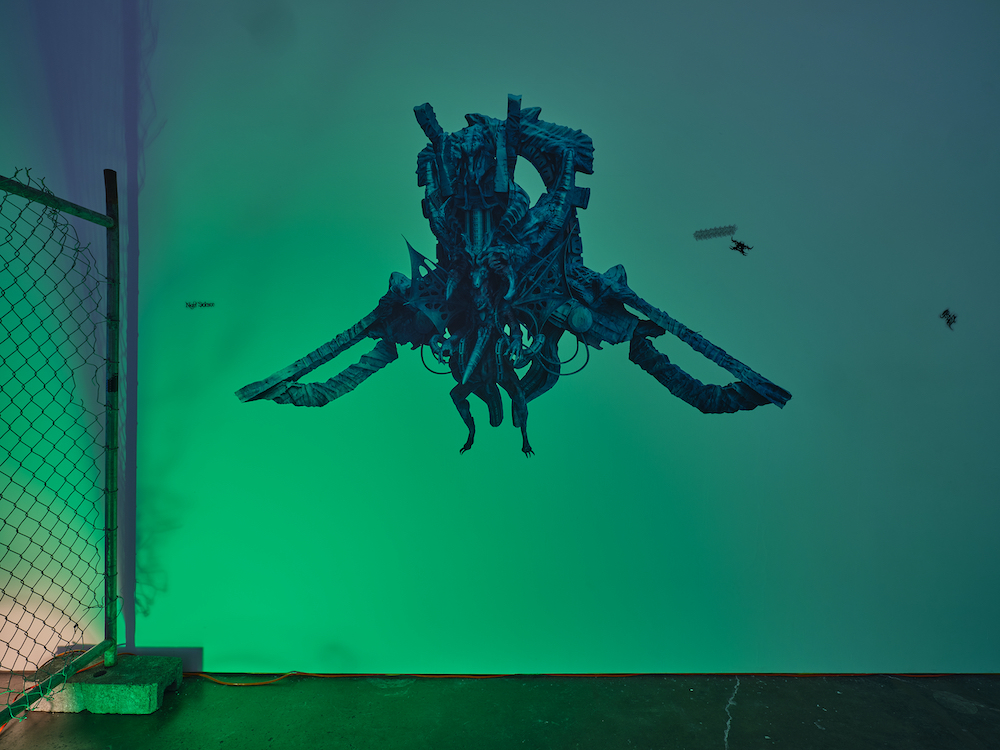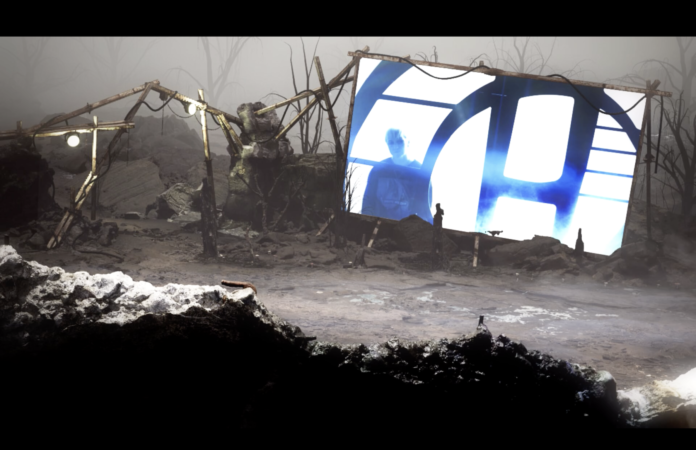In through the electric grid promised land… (on view through April 22), artist Mathew Kneebone ignites communal bonds through the intervention of total darkness. Meanwhile, Most Dismal Swamp takes the viewer on an “infinite side quest” to draw parallels between a farcical simulated dreamscape and our lived experience in modern America. Cloaca Projects’ marcella faustini and Charlie Leese guest curated the exhibition, bringing together Kneebone and Most Dismal Swamp to enlist the shroud of late-stage capitalism as an actor, and partnering with local radio stations Fault Radio and HydeFM.
The exhibition analogizes the flow of electricity and its infrastructure to the local artistic community, poignantly reflecting on Cloaca Projects’ own recent challenges, familiar roadblocks for many other art collectives across the Bay Area. At the same time, the show is also curious as to how communities form, maintain, and adapt to the social landscape—as well as what one must sacrifice to take part in them.

Are You in the Dark? You Are Not Alone by Mathew Kneebone triggers a power shut-off at / (slash) art every time there is an outage by PG&E in the Bay Area, connecting visitors of the gallery with those experiencing power outages nearby. Both a poignant and powerful gesture, the intervention illuminates the assumed privileges of vision, experience, and function through the light’s stark absence. Left to wander through the dark room, hands outstretched, I could only feel a sense of camaraderie with my fellow gallery-goers and the show’s attendant. As we gathered around the flickering breaker box, I was struck by the sheer number of outages recorded on the coded screen and the sense of instability they imparted. Though of course, the stakes are lower for visitors at / (slash) art, the piece illuminates the holes in the shiny facade of our “promised land.”

When the power is restored, Most Dismal Swamp’s MUSH has a moment to encapsulate viewers in an immersive multimedia environment. The site-specific installation bisects the gallery space with a tattered, life-size chain-linked fence resembling that of an abandoned lot. The viewer is invited to sit in a quintessential free-on-Craigslist-looking brown leather recliner on one side of the fence in front of a monitor, a pairing that resembles that of a living room. All of these elements are borrowed from an urban visual vernacular that feels eerily familiar. A two-channel projection plays against the gallery walls, distant and sometimes out of sync. Amid the tangles of online jargon narrated by whispers and Auto-Tuned voices is a brilliant commentary of social formation. All the while, it seems to troll the viewer with words that mean nothing at all, and yet point to that nothingness as a source of power and influence.
The visual barriers—the chain-linked fence, the multichannel screens, and the specific vantage point from the found recliner—mirror the linguistic sludge professed by the installation’s audio. All of these elements illuminate the often unconscious sacrifices by which one must abide in order to assimilate into a group, be that an online or offline group like a political party, social class, or institution. The installation is at once hyperbolic and overstimulating yet oddly familiar, teasing out realities with absurd imagery and audio, making this fantastical and nightmarish simulation much closer to reality than one might expect.

By combining these works, the exhibition calls on the viewer to consider the underbelly of America’s “promised land.” That title is borrowed from Derek Jarman’s book Through the Billboard Promised Land Without Ever Stopping, in which a blind king and his valet road trip across America on a quest to nowhere while encountering the pitfalls and implications of modernity. While this text was written in the 1970s, its thematic underpinnings give context to the aptly named exhibition, which narrows in on a system of our current moment that is faltering: the electric grid. In addition to the realities of this country-wide issue, the nature of electricity is an analogy for the artistic community and commons in the Bay Area—it is agile, formless, and quick. In the darkened gallery space within / (slash) art, one can sense the shadows of creative spaces that, even in their physical absences, continue to contribute to the vibrant arts community.
THROUGH THE ELECTRIC GRID PROMISED LAND… runs through April 22. / (slash) art gallery, SF. More info here.




